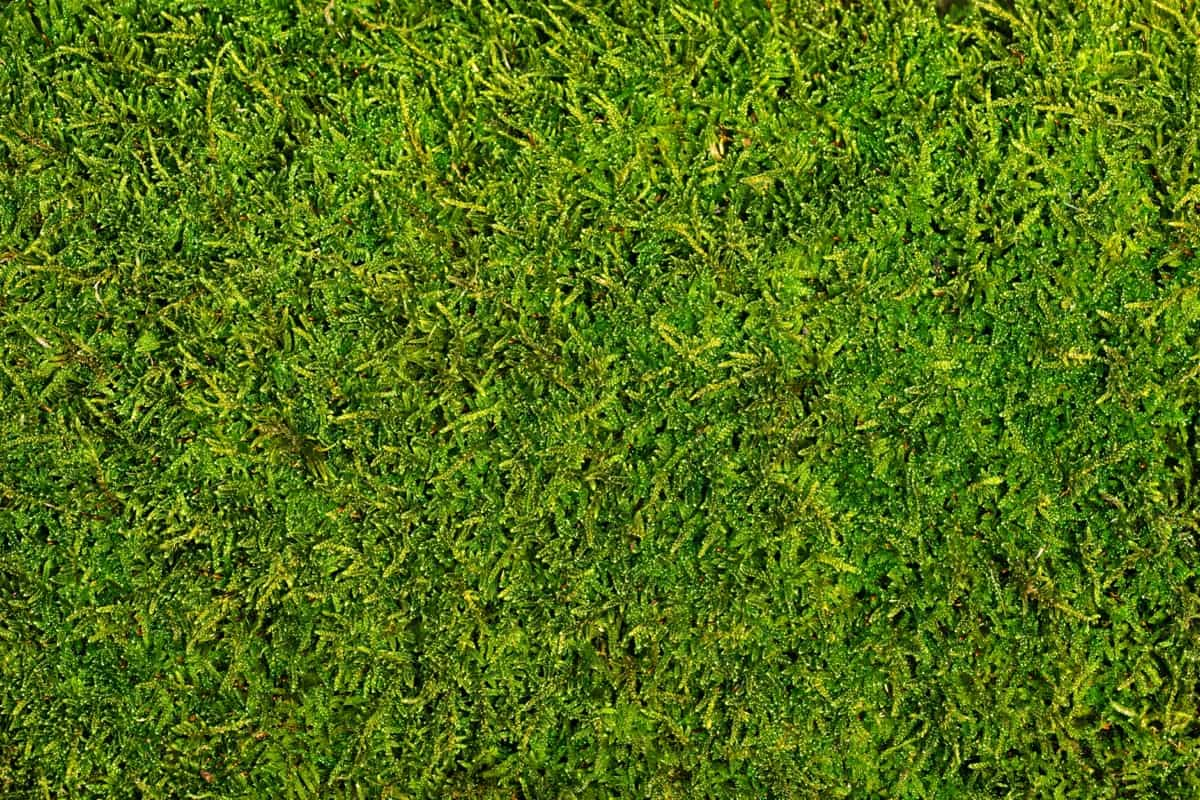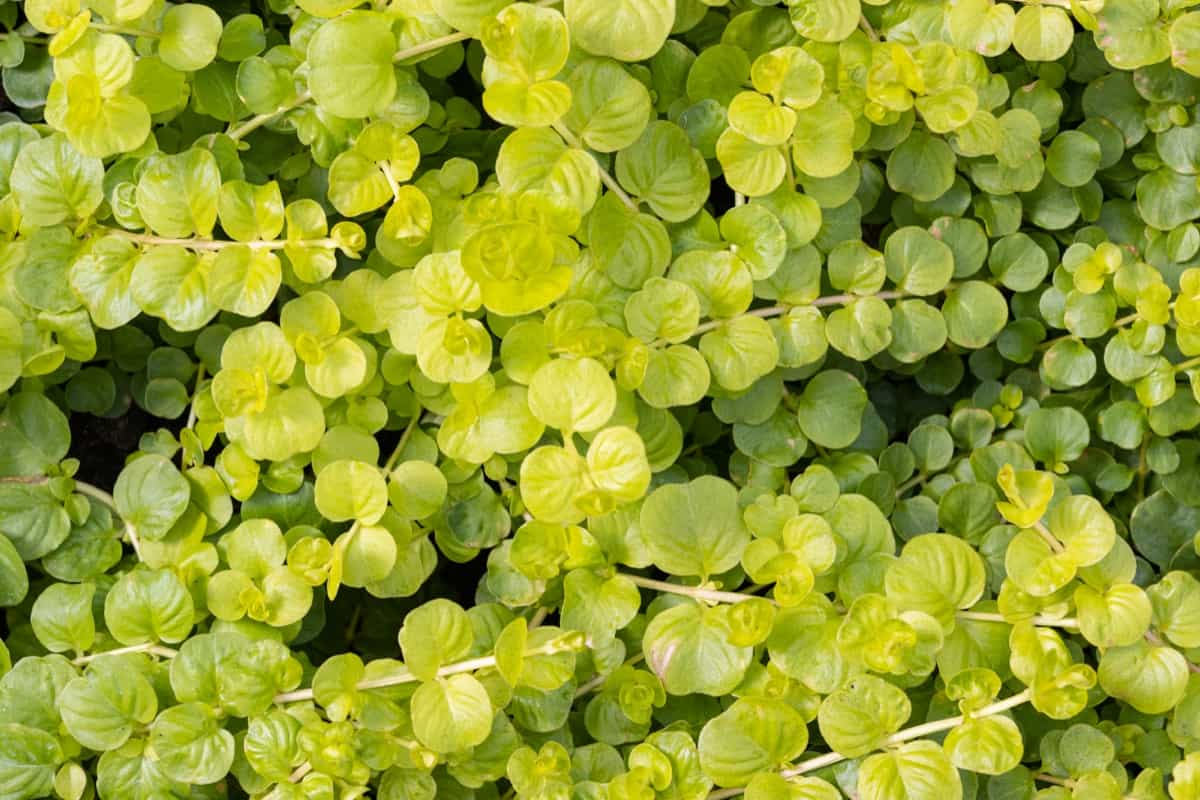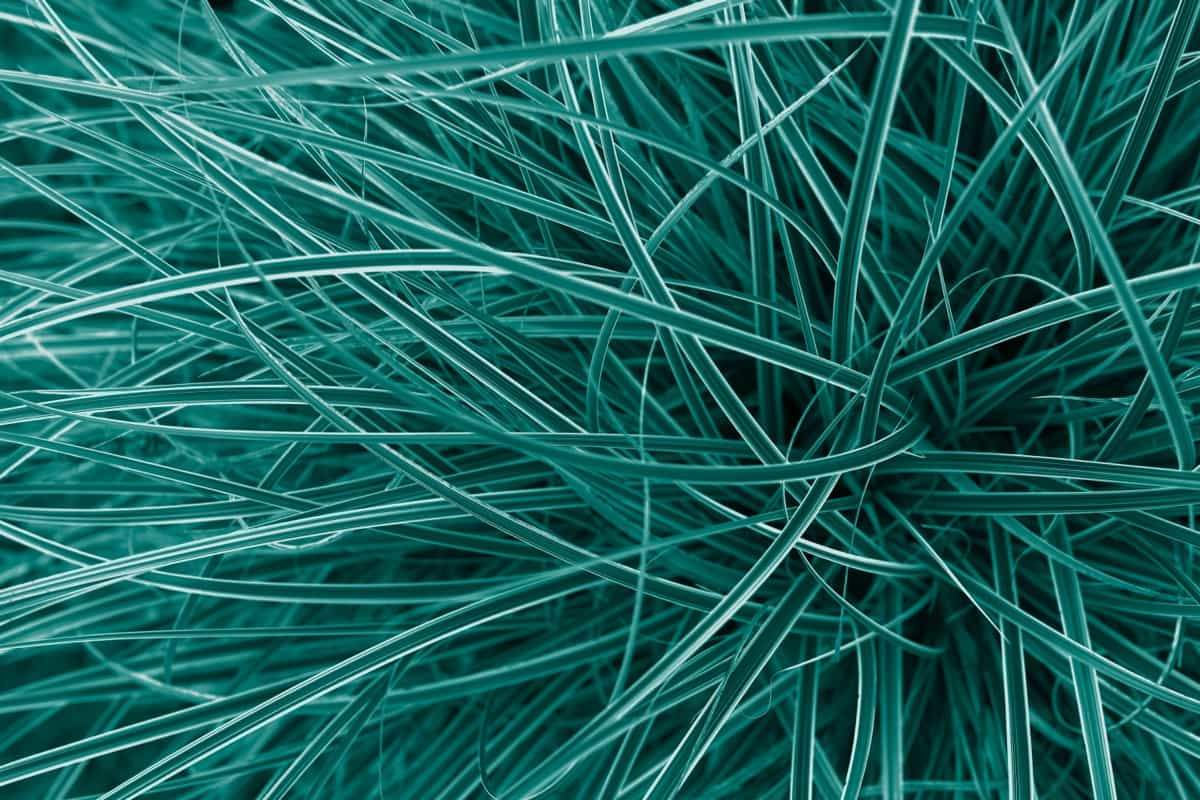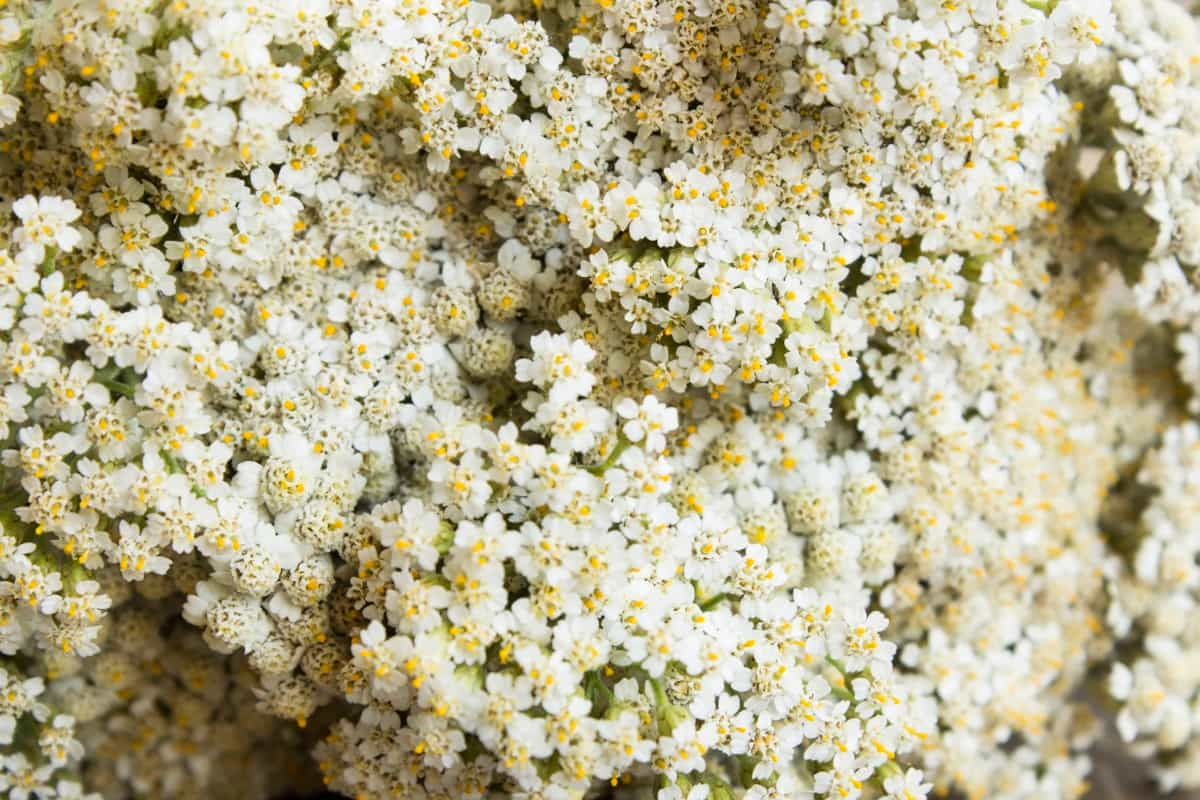Exploring grass alternatives for your yard can provide numerous benefits, from reducing maintenance requirements to promoting environmental sustainability. Before making any changes, take the time to research different types of grass alternatives that are suitable for your climate and soil conditions.
Once you’ve selected a grass alternative, it’s important to properly prepare your yard before making the switch. Maintaining your chosen grass alternative is relatively straightforward but may require some additional care initially. Regular watering, fertilizing if necessary, and occasional trimming or mowing will help keep your yard looking its best throughout the year.
Grass Alternatives for Your Yard
Clover
Clover is a versatile and low-maintenance alternative to traditional grass lawns. Its vibrant green leaves add a touch of natural beauty to any yard. One of the great benefits of Clover is its ability to fix nitrogen in the soil, which can help improve overall soil health and fertility. This means you’ll spend less time and money on fertilizing your lawn. Another advantage of Clover is its resilience against foot traffic.

Unlike grass, which gets easily damaged or worn out, Clover can withstand heavy use without losing its lush appearance. Clover also attracts pollinators like bees and butterflies with its sweet-scented flowers. So not only will you have a beautiful lawn, but you’ll also be providing a valuable food source for these important insects. In addition, Clover’s dense growth helps suppress weeds, reducing the need for herbicides in your yard. It forms a thick carpet-like cover that chokes out unwanted plants naturally.
Wild Strawberry
With their delicate white flowers and vibrant red berries, these little plants can add a touch of whimsy to any yard. One of the greatest advantages of Wild Strawberries is their ability to thrive in both sun and shade, making them incredibly versatile. Their low-growing habit means they won’t overshadow other plants in your landscape, allowing for a harmonious coexistence.
In addition to their aesthetic appeal, Wild Strawberries also offer some practical benefits. The berries are not only delicious but packed with antioxidants as well. Plus, they attract pollinators like bees and butterflies, contributing to a healthier ecosystem. Maintenance-wise, Wild Strawberries require minimal effort. They spread through runners that creep along the ground, creating a dense carpet-like covering that suppresses weed growth. Simply trim back any excess foliage if needed.
Moss
Moss is a fantastic alternative to traditional grass when it comes to low-maintenance landscaping. This lush and vibrant ground cover has been used in gardens for centuries, and with good reason. One of the great things about Moss is that it requires very little care once established. It thrives in shady areas where other plants struggle, making it perfect for those hard-to-grow spots in your yard.
In case you missed it: How to Plant Grass Seed: A Complete Guide to Success

Another benefit of using Moss as a ground cover is its ability to prevent erosion. Its dense growth pattern helps keep soil in place on slopes and hillsides, reducing the risk of mudslides during heavy rainfall. Not only is Moss beautiful to look at with its velvety texture and rich green color, but it also provides an important habitat for insects like bees and butterflies.
Thyme
Thyme is not just a delicious herb; it can also be an excellent alternative for grass in your yard. With its low-growing and dense nature, Thyme creates a beautiful carpet-like effect that requires minimal maintenance. One of the great things about Thyme is its ability to withstand various weather conditions. Whether you live in a hot and dry climate or a cooler region with frosty winters, Thyme will thrive and remain green throughout the year.
Its small leaves release a delightful fragrance when stepped on, creating an inviting atmosphere in your outdoor space. Another advantage of using Thyme as ground cover is its resistance to foot traffic. Unlike traditional lawns that quickly become worn out from constant use, Thyme can handle being walked on without losing its vitality. This makes it ideal for areas where children play or paths frequently used by visitors. To maintain your Thyme lawn, simply trim it back once or twice a year to prevent it from becoming too woody or leggy.
Creeping Mazus
With its vibrant green leaves and tiny purple flowers, it creates a charming carpet-like effect. This low-growing perennial thrives in moist soil and partial shade, making it the best choice for shady areas where grass may struggle. One of the great things about Creeping Mazus is its ability to spread quickly and fill in bare spots. Its creeping nature allows it to form dense mats, suppressing weed growth and reducing maintenance requirements.
Plus, the flowers attract pollinators like bees and butterflies, adding even more life to your garden. When planting Creeping Mazus, make sure to provide adequate moisture until it establishes itself. Once established, this resilient ground cover can tolerate periods of drought without sacrificing its lush appearance. It’s also relatively low maintenance compared to traditional grass lawns since it doesn’t require regular mowing or fertilizing.
Creeping Jenny
With its trailing stems and round chartreuse leaves, this perennial plant creates a lush carpet-like effect wherever it grows. One of the great things about Creeping Jenny is its adaptability. It thrives in both sun and shade, making it a versatile option for various areas of your yard. Whether you have a sunny garden bed or a shady corner under trees, Creeping Jenny can thrive and provide an eye-catching display.
In case you missed it: How to Make Grass Clippings Compost Fertilizer: Homemade Recipe, DIY for Container, Indoor, and Backyard Garden Plants

In addition to its aesthetic appeal, Creeping Jenny offers practical benefits as well. Its dense growth pattern helps to suppress weeds and prevent soil erosion. Another advantage of Creeping Jenny is its ability to tolerate moist conditions. If you have areas in your yard that tend to stay wet or receive regular irrigation, this plant will be right at home.
Liriope
With its lush green foliage and delicate purple flowers, Liriope is not only visually appealing but also incredibly versatile. One of the main advantages of Liriope is its ability to thrive in various conditions. Whether you have full sun or shade, dry soil, or moist soil, Liriope can adapt and flourish. This makes it an excellent choice for those hard-to-grow areas where other plants may struggle.
Not only is Liriope resilient, but it also requires minimal care once established. It has a slow growth rate and doesn’t need frequent mowing or watering. This means less time spent maintaining your yard and more time enjoying it. In addition to being low-maintenance, Liriope offers several other benefits for your landscape. Its dense foliage helps prevent weed growth by shading out competing plants. It also provides erosion control on slopes due to its extensive root system.
Furthermore, Liriope attracts pollinators such as bees and butterflies with its vibrant flowers. This can contribute to a healthy ecosystem in your yard while adding pops of color throughout the seasons. Whether used as ground cover, border edging, or even in containers, Liriope adds texture and interest to any landscape design. Its evergreen leaves provide year-round appeal while requiring little attention from you.
Sedge
With its slender, arching leaves and fine texture, Sedge adds an elegant and graceful element to any landscape. One of the great benefits of using Sedge in your yard is its ability to thrive in both full sun and partial shade. This makes it a perfect choice for those areas of your yard where other plants may struggle. Whether you have a sunny backyard or a shady corner, Sedge can adapt and flourish. Another advantage of Sedge is its tolerance for different soil types.
In case you missed it: Best Fertilizer for Lawn Grass: Homemade, Organic, Compost, Liquid, How and When to Apply

It can grow well in moist or dry conditions, making it an ideal option for landscapes with varying levels of moisture. Sedge also has excellent erosion control properties, which can be beneficial if you live on sloping terrain or near bodies of water. In addition to being visually appealing and adaptable, Sedge requires minimal maintenance. It doesn’t need frequent mowing like traditional grasses do, saving you time and effort. Once established, Sedges are generally drought-tolerant as well, reducing the need for constant watering.
Buffalo Grass
Buffalo Grass is a popular alternative to conventional lawns due to its low-maintenance nature and ability to withstand drought. This hardy grass variety thrives in hot, dry climates and requires minimal watering once established. It has deep roots that can access moisture from deeper layers of the soil, making it the best choice for areas with limited water resources. Not only does Buffalo Grass require less water than traditional turf grasses, but it also needs less mowing.
Its slow growth rate means you won’t have to spend hours each week tending to your lawn. In addition to being low maintenance, Buffalo Grass has a beautiful appearance. Its soft blue-green blades create a lush carpet-like effect that adds beauty and texture to any landscape. Another benefit of Buffalo Grass is its resilience against pests and diseases. This grass variety naturally repels many common lawn pests, reducing the need for chemical treatments.
Dichondra
With its round, silver-green leaves and creeping growth habit, Dichondra forms a dense mat that can withstand light foot traffic. It’s an excellent choice for areas where you want something more visually interesting than plain old grass. One of the great things about Dichondra is its ability to tolerate both sun and shade. Whether your yard gets full sun or has some shady spots, this versatile ground cover will thrive.
Just make sure it receives enough water during dry spells to keep it looking lush and healthy. Another advantage of Dichondra is its minimal mowing requirements. Unlike regular grass, which needs frequent cutting to stay neat, Dichondra only needs occasional trimming to maintain its shape. In addition to being low maintenance, Dichondra also helps conserve water.
Fescue
Fescue is a type of grass that is well-suited for low-maintenance landscaping. Its fine texture and deep green color make it an attractive option for those who want a lush lawn without the hassle of constant upkeep. This grass has deep roots that allow it to withstand periods of dry weather without needing excessive watering.
In case you missed it: How to Grow Bermuda Grass from Seeds: Germination Process

So, if you live in an area with water restrictions or simply want to conserve water, Fescue could be the perfect choice for your yard. In addition to being low-maintenance, Fescue also requires less mowing than other types of grass. Its slow growth rate means you won’t need to spend as much time behind the lawnmower, giving you more time to relax and enjoy your outdoor space.
Ajuga
Ajuga is a versatile and low-maintenance ground cover that can be a great alternative to traditional grass. With its vibrant foliage and beautiful blue-purple flowers, Ajuga adds a splash of color to any landscape. One of the best things about Ajuga is its ability to thrive in shady areas where grass may struggle.
It’s perfect for those spots in your yard that don’t get much sunlight but still need some greenery. Plus, it spreads quickly and forms a dense mat, effectively crowding out weeds. Not only is Ajuga visually appealing, but it also offers practical benefits. Its dense growth helps prevent soil erosion on slopes or hillsides. Additionally, it acts as a natural weed suppressant by blocking sunlight from reaching weed seeds.
Maintenance-wise, Ajuga requires very little effort. It is drought-tolerant once established and doesn’t require frequent watering like traditional lawns do. You can simply let nature take care of most of its needs. In terms of care, all you really need to do is trim back any overgrown or dead foliage every spring to maintain its neat appearance. Other than that, sit back and enjoy the beauty that Ajuga brings to your yard without the hassle of constant maintenance.
Yarrow
Yarrow is a versatile and hardy perennial plant that can be a great alternative to grass in your yard. With its feathery foliage and colorful flowers, Yarrow adds beauty and interest to any landscape. One of the benefits of Yarrow is its low-maintenance nature. Once established, it requires minimal watering and can tolerate a wide range of soil conditions. This makes it an ideal choice for those looking for a fuss-free landscaping option.
In case you missed it: Top 20 Tulip Varieties to Brighten Your Garden

In addition to being easy to care for, Yarrow also attracts pollinators such as bees and butterflies with its nectar-rich blooms. This can help support local ecosystems by providing food sources for these important creatures. Another advantage of Yarrow is its ability to withstand drought conditions. Its deep roots allow it to access water from lower soil levels, making it more resilient during dry spells.
Chamomile
Chamomile, with its delicate white flowers and soothing fragrance, is a popular choice for low-maintenance landscaping. Growing Chamomile in your yard is the attraction it brings to pollinators like bees and butterflies. These insects play a crucial role in pollination, which helps plants flourish and reproduce. If you’re considering incorporating Chamomile into your low-maintenance landscape design, keep in mind that it prefers well-drained soil and full sun exposure. It’s also important to note that regular deadheading will encourage continuous blooming throughout the season.
Blue Star Creeper
Blue Star Creeper is a lovely ground cover option that will add beauty and charm to your yard. This low-growing perennial plant features delicate blue flowers that resemble tiny stars, hence its name. Its lush green foliage forms a dense carpet-like mat, making it an excellent choice for filling in gaps between steppingstones or as an alternative to traditional grass.
One of the great advantages of Blue Star Creeper is its adaptability to different soil types and light conditions. Not only does Blue Star Creeper provide visual appeal with its vibrant blooms and soft texture, but it also attracts pollinators such as bees and butterflies to your garden. This can help promote a healthy ecosystem by supporting biodiversity.
Conclusion
Low-maintenance landscaping can offer a range of benefits for homeowners. By embracing low-maintenance landscaping techniques with grass alternatives in place of traditional turfgrass, you’ll not only save time and money but also contribute positively to the environment by conserving water resources and reducing chemical usage.
- Where to Place Indoor Plants in Your Home
- How to Grow Tomatoes Organically at Home: A Comprehensive Guide
- Organic Gardening on a Budget: Low-Cost Methods and Materials
- Gongura Seed Germination and Planting Methods
- Cabbage Seed Germination and Selection
- Broccoli Seed Germination and Selection
- Asparagus Seed Germination and Variety Selection
- Seasonal Flower Gardening: Best Practices for Spring, Summer, Fall, and Winter
- How to Grow Hibiscus from Flower
- Plantation Ideas for Home Decoration: A Beginners Guide
- Flower Garden Designs and Layouts for Beginners
- Planting and Spacing Techniques in Papaya: A Beginner’s Guide
- Growing Gold: Essential Techniques for Planting Pineapples
- How to Make Kalanchoe Plant Bushy: Home Remedies and Solutions
- 11 Reasons Why Your Gardenia is Not Blooming: Home Remedies and Solutions
- Eco Elegance: The Guide to Designing a Drought-Tolerant Landscape
- Gardening on a Slope: Strategies for Hillside Landscaping
- Nourish and Flourish: Top Organic Mulches for Thriving House Plants
- Everything You Want to Know about Indian Mogra Flower: Discover Uses and Growing
- Green Thumb Success: Expert Tips for Cultivating Greenhouse Pumpkins All Year Round
- Maximize Growth & Flavor: The Ultimate Guide to Companion Planting in Herb Gardens
- How to Control Rhododendron Problems Naturally: Home Remedies and Organic Ways to Fix Them
- Natural Magic: The Remarkable Benefits of Cinnamon for Plants
- Best Steps to Revive Dying Tulip with Natural and Organic Treatment
- 10 Reasons Why Your Angel Trumpet is Not Blooming: Remedies and Treatment
- How to Fix Periwinkle Leaf and Flower-Related Problems: Natural Remedies and Solutions
- How to Fix Zinnias Leaf and Flower Problems: Discover Natural and Home Remedies
- Organic Steps to Induce Lemon Tree Flowers: A Comprehensive Guide
- Bloom Booster: Crafting the Perfect Homemade Bougainvillea Fertilizer
- Optimizing Growth: A Guide to Applying NPK Fertilizer for Potted Plants
- 10 Best Homemade Fertilizers for Rubber Plant: DIY Recipes and Application Method
- How to Boost Female Pumpkin Flowers: Effective Steps for More Flowers and High Yields
- Transform Your Indoor Garden: Top Benefits of Pink Salt for Houseplants
- 10 Best Homemade Fertilizers for Peacock Plants (Calathea): Easy DIY Guide
- Unlock Blooms: 9 Reasons Why Your Potted Chrysanthemum is Not Blooming
- 8 Reasons Why Your Potted Hibiscus is Not Blooming: Fix it with Simple Solutions